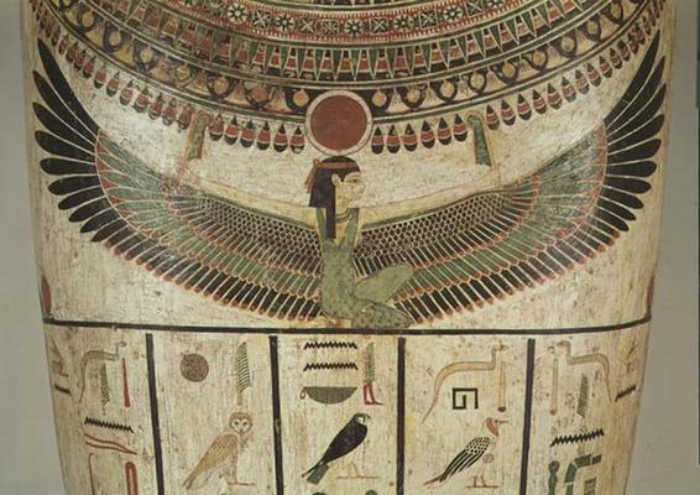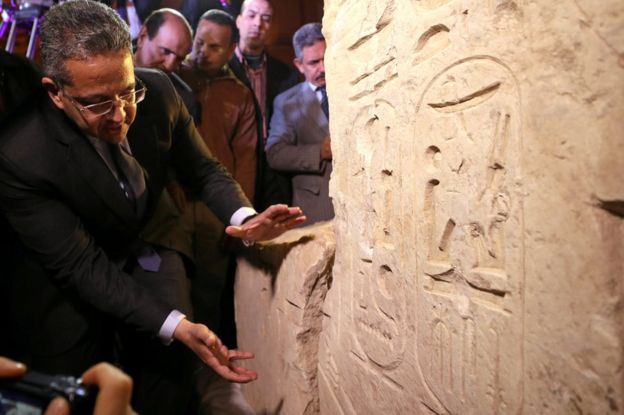As it turns out the statue uncovered in Egypt recently is not Ramses II, rather it is the statue of Psamtek I, who ruled between 664 and 610BC.
Initially, experts thought the statue was Ramses II because it was uncovered next to a temple dedicated to the ruler.
But one of Psamtek’s five names was found engraved on the huge statue.
“If it belongs to this king, then it is the largest statue of the Late Period that was ever discovered in Egypt,” Ahram Online reported him as saying.
The identity of the statue was uncovered after they moved the statue – which was 29ft tall originally – from a wasteland in between apartment blocks on the site of the ancient capital, Heliopolis, to the Egyptian Museum in central Cairo.
The statue was made out of quartzite, and the torso of the statue weighed roughly three tons. The Ministry of Antiquities hopes to put the statue back together again.

Who was Psamtek I?
Psamtik I, Psamtik also spelled Psammetichus (died 610 bce), governor, later king (reigned 664–610 bce) of ancient Egypt, who expelled the Assyrians from Egypt and reunited the country, founding its 26th dynasty (664–525 bce; see ancient Egypt: The Late period [664–332 bce]).
According to the Greek historian Herodotus, he was one of 12 corulers and secured the aid of Greek mercenaries in order to become sole ruler. After an abortive rebellion by his vassals against the Assyrian ruler of Egypt in 663, Psamtik was unexpectedly restored as governor of Athribis, a city of the Nile River delta, by the Assyrian king. Later, rejecting his vassal status, he negotiated an alliance with Gyges, the king of Lydia in Asia Minor, which enabled him to subdue the other Assyrian princes and vassals in the delta (658–651). He established his capital at Sais, his native city, in the western delta, and proceeded to reform Egypt’s government. To remove the last vestiges of the rule of the kings of Kush—the African kingdom south of Egypt, which had persisted after the Assyrian raid of 663—he negotiated the adoption of his daughter Nitocris by the priestess of the Theban god Amon, thus securing control over the considerable wealth of the temples. Thebes remained under its own governor, an appointee of the Kushites, but Psamtik installed a new official as governor of the south and also created the post of administrator of Middle Egypt. In addition, he placed military garrisons along the Nile throughout Upper and Middle Egypt.



















I was just in Egypt last month!! Cairo and Luxor!! Temple of Tamses ll and Cairo museum!! Amazing, but they were a VERY SATAINCALLY DRIVEN culture!!
I have never heard of the name mentioned.. I think someone is wrong over there.
This Pharoah was before Ramses..
I just thought of something let’s wait to say it’s not a elongated skull until they possibly clean it up and restore it because it might be a crown instead just a thought.
You could be right… I can’t believe it’s not Ramses ii… you?
Yes I have never heard of this pharaoh.
They say he was before ramses which I think is interesting.. It could further prove my theory of the elongated skull… maybe
Yes can we hold off on calling it a elongated skull until we have more information or it’s restored.
Sure sounds good!
Thanks it’s interesting I tried to comment on the Ramses videocast I kept getting a error 404 on the screen so had to comment about the statue on the shack.
It’s okay. You kept getting a 404? I had no idea, that’s odd are you talking about this one: https://officialstreetpreachers.com/youtube/egyptian-pharaoh-ramses-ii-had-an-elongated-skull-was-he-a-nephilim/
Yes I tried it just now it’s working.
Remember there were 31 Egyptian dynasties…